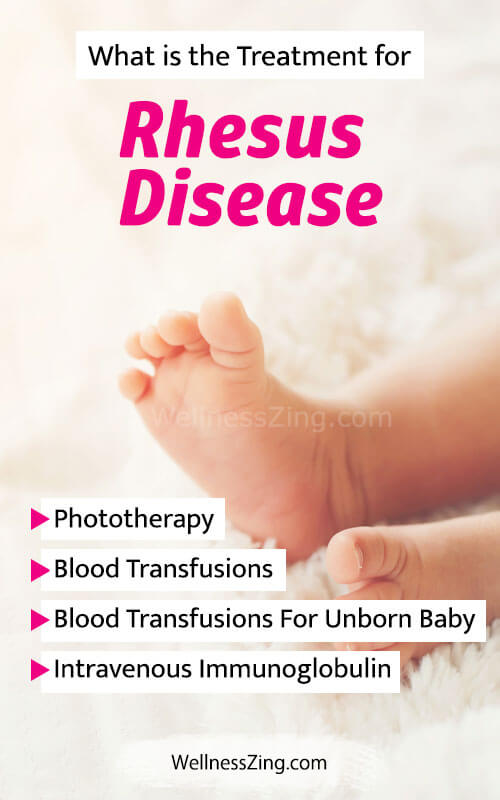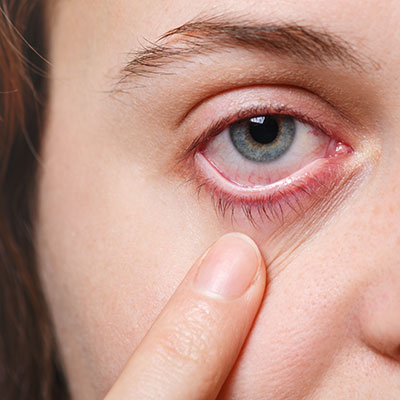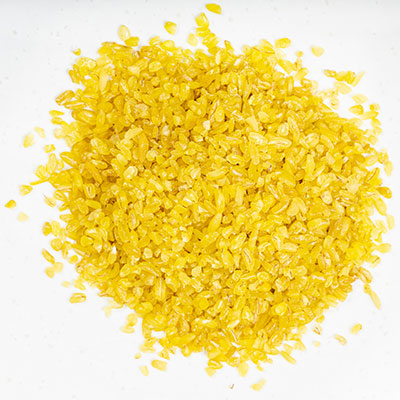Rhesus Disease : An Introduction
Many women remain unaware of the presence of the Rh factor throughout their entire pregnancy. As a result, the baby is born with rhesus disease. But what is rhesus disease? How can it be detected? What happens when the mother is found to be Rh-negative during pregnancy?
Are you new to Rhesus disease? Do all these questions disturb you? Through this blog, lets today work on every aspect related to Rhesus disease like what it means, the symptoms, causes and treatment.
What is Rhesus Disease?
There are many people having Rh-positive blood type. This means they are capable of producing the Rh factor which is an inherited protein the red blood cells contain. When an individual lacks the Rh factor in the red blood cells, he is termed to be Rh-negative.
Henceforth, Rhesus disease or say Rh disease is a condition that arrives due to some discordancy between the blood of the fetus and the mother. If the expecting mother is having Rh-negative blood, and the fetus is having Rh-positive blood, at the time of pregnancy, some of the red blood cells with Rh-positive components from the fetus get mixed into the bloodstream of the mother. As the red blood cells are moved to the bloodstream of the mother, her body would try to eliminate them by producing additional antibodies, which is termed as the sensitization process.
During the first pregnancy, the chances of the baby being Rh-positive is quite negligible as the child gets delivered prior to the production of Rh antibodies by the mother. However, after that, the body of the mother would constantly produce Rh antibodies for her entire life which increases the chances of an Rh-negative child during the second and following pregnancies as the Rh antibodies are sure to reach the fetus through the placenta. This results in rhesus disease, popularly termed as Rh disease.
Rhesus disease affects the unborn baby by destroying his/her blood cells that result in anemia and jaundice. In many cases, the baby is also found suffering from health issues like heart failure and brain damage or the situation might get worsen causing death. Fortunately, with the advancement in technology, the doctors can now detect Rh disease and treat the issue which has resulted in a 95% survival of babies.
Is Rhesus disease common?
This might surprise you, but in the U.S. rhesus disease affected around 20000 babies every year. Luckily, after the treatment for Rh disease was discovered in 1968, the number of babies suffering from the disease has reduced remarkably. With the help of the Rh immunoglobin injections, the doctors can now manage to deal with the health issue prior to birth.
Still, around 4000 babies are found suffering from Rh disease every year as not every mother or baby having Rh-negative and Rh-positive blood components get properly treated through the injections.
What are the symptoms of Rhesus disease?
Rhesus disease widely affects the unborn baby and not the mother. Hence, the symptoms would be observed on the baby that can range from mild to severe.
1. Signs of Rhesus disease in the unborn baby
When any baby develops Rh disease when still inside the mother’s tummy, it becomes anemic as the red blood cells in their body get quickly destroyed by the antibodies produced by the mother. When the baby develops anemia, the blood of the baby becomes thinner while the flow becomes faster.
This comes with no visible symptoms; however, it can still be noticed with the help of an ultrasound scan termed as Doppler ultrasound. If the baby is having severe anemia, some symptoms that make rhesus disease clearly visible include internal swelling that is observed in the scans.
2. Signs of Rhesus disease in a newborn baby
Rhesus disease can be easily detected in a newborn baby through health issues like jaundice and hemolytic anemia. Sometimes, the baby is also found suffering from low muscle tone or hypotonia which results in a lack of energy in the newly born baby.
Again, it should be marked that the symptoms might not appear instantly after birth, but would develop in around 3 months after birth.
3. Hemolytic anemia
Hemolytic anemia is a condition when the red blood cells in the body get destroyed. This destruction takes place when the Rh-negative blood antibodies of the mother get into the blood of the baby after passing through the placenta.
The antibodies destroy the red blood cells by attacking the Rh-positive blood of the baby. When this happens to a newborn baby, some symptoms that appear like the skin of the baby turn pale, poor feeding, jaundice or increased breathing rate.
4. Jaundice
When the newborn baby suffers from jaundice, the white part of their eyes and their skin turns into yellow. For the babies with a dark skin tone, this change can be visible in the eyes, soles, and palms. When bilirubin, a chemical gets created in the blood of the baby, he suffers from jaundice. Bilirubin is a yellow compound or substance that gets produced in the red blood cells of the baby naturally when they are broken.
The red blood cells get eliminated from the blood and body through the liver in the form of urine. For new born babies suffering from rhesus disease, the liver is unable to process the increased bilirubin levels which destroy the red blood cells in the baby.
Hence, to detect Rhesus disease in any newborn baby, the mother needs to focus on health issues like jaundice, lethargy and low muscle tone for getting a complete treatment for the same.
Rhesus Disease and Pregnancy
The negative or positive symbol your blood type carries determines the Rh factor you have. For example, if your blood group is ‘B+’, the positive or ‘+’ sign after the blood group B is the Rh factor you are carrying. The Rh factor doesn’t come with any direct impact on health. However, it is much essential when it comes to pregnancy.
Suppose if the expecting mother is Rh-negative, and the baby is Rh-positive, then the body of the mother would approach to Rh-positive protein compounds transferred from the unborn baby if her immune system gets exposed to the compounds.
Hence, if the blood cells get into your body through the placenta and get mixed in your bloodstream which is possible during delivery, labor pain, and pregnancy, the immune system of the mother would produce the antibodies against the red blood cells of the baby. The antibodies are the part of the immune system of your body, and hence, destroy the foreign substances obtained from the baby.
Women with Rh-negative type of blood are termed as sensitized to the Rh-positive blood types once the body starts making antibodies. Hence, the body might transfer the antibodies through the placenta to the red blood cells of the baby for attacking.
Rh Sensitization and Pregnancy: What Increases the Risk?
Rh sensitization is a phase when an individual is having Rh-negative blood and is further exposed to blood with Rh-positive elements. At the time of pregnancy, women with Rh-negative elements can turn out to be sensitized if the fetus she is carrying had Rh-positive elements in the blood.
The things that add to the risk of sensitization and blood mixing during pregnancy are:
- abdominal trauma like a car accident
- delivery
- abdominal surgery like cesarean section
- placenta previa or placenta abruptio leading to bleeding placenta
- breech fetus in an external cephalic version
- obstetric procedures like a fetal blooding sample, amniocentesis, chorionic villus sampling, etc.
- ectopic pregnancy, elective abortion, or miscarriage after nearly 8 weeks of pregnancy
- partial molar pregnancy with a fetus growth of 8 weeks
Rh sensitization is a rare situation, that occurs only when a needle is shared among the users of intravenous drugs. The transfer of Rh-positive blood to Rh-negative blood can also result in sensitization. Yet, the chances of such transfer are very rare as the blood is first tested before starting with the transfusion process.
When and who is tested for the Rh factor?
Both the husband and wife along with the fetus or baby are sure to get tested if the expecting mother is found to be Rh-positive or Rh-negative to check if the fetus is at the risk of having Rh disease. The mother has to get the blood test done in the first prenatal care to check out if she is Rh-positive or Rh-negative.
If the result claims the mother to be Rh-positive, there are no chances of the baby having Rh disease. On the other hand, if the mother is found to be Rh-negative, the following things are carried out:
- the mother has to get the antibody screen test done for checking if the blood contains any Rh antibodies
- if there are no Rh antibodies present in the blood of the mother, the father needs to go through the blood test to check if he is Rh-positive or Rh-negative
- if the father is Rh-positive, or you are unaware of the Rh factor of the partner, the doctor would recommend the mother to go for an amniocentesis check up to see if the baby is having the Rh factor and bilirubin levels
- during the 28th week of the pregnancy, another test is carried out to check the presence of antibody, which also reveals if the baby is suffering from anemia as well as the blood flow in the head of the baby through the Doppler ultrasound
How can you protect the fetus from Rh disease if you are Rh-negative?
If the mother is having a Rh-negative factor, preventing the baby from Rh disease is still possible if you look for the right treatment at the right time. If the Rh antibodies have still not developed in the body of the mother, the doctor would give you Rh immunoglobulin shots called Rho(D) immune globulin. This shot prevents the production of Rh antibodies in the mother so that the baby and pregnancies in the future would be protected from Rh disease.
However, it should also be marked that the shots wouldn’t help with any kind of protection if the body has already started producing Rh antibodies during a previous pregnancy. Hence, it is essential for the mother to receive prenatal care as soon as pregnancy is detected.
When the mother is found having Rh-negative elements, the RhoGAM shots should be taken when the pregnancy is of 28 weeks. The second dosage is given within 72 hours after delivery to the baby if the Rh of the baby is positive or unknown. The shots are also given post situations like ectopic pregnancy, abdominal issues due to accidents, miscarriage, or CVS when the blood of the mother and the baby get mixed up.
The doctor keeps a continuous watch on the baby throughout the pregnancy to learn about its health as well as to detect any signs of anemia. In the third trimester, the doctor might go for an amnio or Doppler ultrasound for checking the health of the baby. The ultrasound also helps in checking the heartbeat of the baby and measure the flow of blood in the umbilical cord along with other blood vessels.
What is the treatment for Rhesus disease?
The treatment for Rh disease widely depends on the severity of the condition. Many times, in severe conditions, the treatment needs to be initiated before the birth of the baby. Fortunately, 50% of the Rh disease cases are mild which requires limited treatment. However, even during such a situation, the doctors would monitor the baby regularly so that no serious problems occur.
If the condition is serious, the phototherapy treatment is carried out and in the treatment, the blood transfusions boost the speed to remove bilirubin from the body. Sometimes, the transfusion of blood is carried out post-delivery through a medication known as intravenous immunoglobulin which is used on the failure of phototherapy at the time of birth.
If the severity level is high, the doctors might go for early delivery through medications to start induction or through the caesarean section to work on the treatment at the earliest. This is basically the option when the pregnancy has reached to about 34 weeks.
Let’s have a brief overview of both the treatments.
1. Phototherapy
Phototherapy is a treatment that is carried out with light. In the treatment, the newborn baby is placed under the fluorescent lamp or halogen, while the eyes remain covered. Otherwise, a blanket is used on which the baby is placed. The blanket contains optical fibers through which the light passes and shines on the back of the baby, which is termed as fibre optic phototherapy.
The light that passes through the blanket or directly gets absorbed by the baby’s skin during the therapy which lowers the levels of bilirubin in the blood which is termed as photooxidation. In short, oxygen is provided to bilirubin which aids bilirubin to get dissolved in water. Hence, it becomes easy for the liver of the baby to break the bilirubin and eliminate it through the blood.
During the process of phototherapy, the fluids would be provided through the veins as the body of the baby would lose additional water through the skin and urination when the bilirubin gets debarred. The process of phototherapy many times reduces or even eliminates the requirement of blood transfusion.
2. Blood transfusions
When the bilirubin levels in the blood are much higher, the doctors might go for blood transfusion sessions, either one or more. At the time of blood transfusion, some amount of the blood of the baby is either removed or replaced from the blood through a suitable blood donor having the same blood group.
The process of blood transfusion is usually carried out by inserting a tube inside the vein, also known as an intravenous cannula.
The process of blood transfusion is also helpful in removing some amount of bilirubin from the baby’s blood along with antibodies that can result in Rh disease. Sometimes, the doctors might also suggest the transfusion of the red blood cells only.
3. Blood transfusions for an unborn baby
When the baby is found having Rhesus disease inside the womb, the doctors might go for a blood transfusion before delivery. This process is termed as an intrauterine foetal blood transfusion. The process demands experts and hence, it is available in limited hospitals.
Hence, there are chances you might be guided to some other hospital for the process.
In the process, a needle is inserted to the baby through the abdomen of the mother by passing it from the umbilical cord. In this way, the donated blood reaches the baby through injection. For checking if the needle has reached the right place, an ultrasound scanner is also used for complete guidance.
When the process is carried out, local anesthesia is given to the mother to make the particular area numb however, the mother would remain awake when the process is carried out. To keep the mother and the baby in a relaxed state, a sedative might also be given which prevents them from moving while the needlework is done.
The doctors can either recommend you one or many intrauterine foetal blood transfusion sessions. If more sessions are planned, they are repeated every 2 to 4 weeks until the baby is mature for delivery. The doctors can also reduce the phototherapy treatment after birth however, blood transfusion therapies might still be carried out. It should also be noted that during the process of blood transfusion inside the womb comes with an increased risk of miscarriage.
4. Intravenous immunoglobulin
When the bilirubin level continuously increases in the blood of the baby, the doctors might also recommend intravenous immunoglobulin treatment along with phototherapy. The immunoglobulin is a solution to the antibodies which are borrowed from healthy donors. The process is carried out through injections in the vein.
This treatment prevents the red blood cells from getting destroyed, which helps in reducing the bilirubin levels in the blood of the baby. It also reduces the requirement of the blood transfusion process. This process also comes with potential risks like an allergic reaction to immunoglobulin levels the severity levels of which is even difficult to track.
Prior to starting with any of the treatments, it is essential that the side effects of the treatment are considered and the possible precautions are also taken.
Bottom Line
Rhesus disease can surely be a mild or severe condition, which needs proper attention when diagnosed. It is also preventable and hence, as soon as the mother confirms her blood to be Rh-negative, it is advisable to seek the attention of the doctor at the earliest.



















